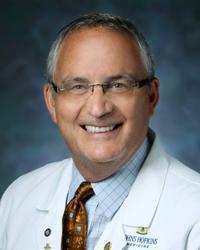Research Lab Results
-
Translational Informatics Research and Innovation Lab
The mission the Translational Informatics Research and Innovation (TIRI) Lab is to understand and create advanced technology and digital device solutions that address challenges to the translation of biomedical data science-informed guidance into clinical use to improve the health of individuals, especially for people that are often underrepresented in research. -
Wilmer Bioinformatics Lab
Wilmer Bioinformatics has been mainly focused on ocular informatics. Specifically, the group develops and applies bioinformatics approaches to study gene regulation and signaling networks, with particular but not exclusive attention to the mammalian retina. Understanding the molecular basis of tissue specific gene regulation and signaling will contribute to better prevention, diagnosis and treatment of retinal disease. -
Casey Overby Lab
Research in the Casey Overby Lab focuses on the intersection of public health genomics and biomedical informatics. We’re currently developing applications to support the translation of genomic research to clinical and population-based health care settings. We’re also working to develop knowledge-based ways to use big data — including electronic health records — to improve population health.
-
Hadi Kharrazi Lab
Research in the Hadi Kharrazi Lab focuses primarily on contextualizing clinical decision support (CDS) into population health informatics (PHI) to be used at different HIT levels of managed care, including electronic health records (EHRs) and consumer health informatics (CHI) solutions. Our team has modified and regenerated electronic quality measures (eQM) based on PHI-derived CDS to represent a population aspect of the health quality measurements. Through the Center for Population Health IT (CPHIT) at the Bloomberg School of Public Health, we are pursuing PHI research that provides direct population-based CDS to providers, patients and payers. -
In-vivo Cellular and Molecular Imaging Center
The In-vivo Cellular and Molecular Imaging Center conducts multidisciplinary research on cellular and molecular imaging related to cancer. We provide resources, such as consultation on biostatistics and bioinformatics and optical imaging and probe development, to understand and effectively treat cancer. Our molecular oncology experts consult on preclinical studies, use of human tissues, interpretation of data and molecular characterization of cells and tumor tissue. -
Todd Dorman Lab
Research conducted in the Todd Dorman Lab examines the use of informatics in intensive care settings as it relates to remote patient monitoring, safety and management strategies. Specific areas of interest include the surgical stress response; aminoglycoside antibiotics; fungal infections; renal failure; pharmacokinetic models of drug administration; and ICU triage and its impact on disaster preparedness.
-
Tom Woolf Lab
The Tom Woolf Lab studies the quarter of the genome devoted to membrane proteins. This rapidly growing branch of bioinformatics, which includes computational biophysics, represents the main research direction of our group. We aim to provide insight into critical issues for membrane systems. In pursuit of these goals, we use extensive computer calculations to build an understanding of the relations between microscopic motions and the world of experimental measurements. Our calculations use our own Beowulf computer cluster as well as national supercomputer centers. An especially strong focus has been on the computed motions of proteins and all-atom models of the lipid bilayers that mediate their influence. To compute these motions, we use the molecular dynamics program CHARMM. We hope to use our understanding of the molecular motions for the prediction of membrane protein structures using new computational methods. -
Suchi Saria Lab
The Suchi Saria Lab, part of the Institute for Computational Medicine, explores topics within the fields of machine learning and computational statistics, with a focus on computational solutions for problems in health informatics. Our team investigates the applications of machine learning and computational statistics to domains where one has to draw inferences from observing a complex, real-world system evolve over time. We use Bayesian and probabilistic graphical modeling approaches to address the challenges that emerge with modeling and prediction in real-world temporal systems.
Principal Investigator
-
Systems Biology Laboratory
The Systems Biology Lab applies methods of multiscale modeling to problems of cancer and cardiovascular disease, and examines the systems biology of angiogenesis, breast cancer and peripheral artery disease (PAD). Using coordinated computational and experimental approaches, the lab studies the mechanisms of breast cancer tumor growth and metastasis to find ways to inhibit those processes. We use bioinformatics to discover novel agents that affect angiogenesis and perform in vitro and in vivo experiments to test these predictions. In addition we study protein networks that determine processes of angiogenesis, arteriogenesis and inflammation in PAD. The lab also investigates drug repurposing for potential applications as stimulators of therapeutic angiogenesis, examines signal transduction pathways and builds 3D models of angiogenesis. The lab has discovered over a hundred novel anti-angiogenic peptides, and has undertaken in vitro and in vivo studies testing their activity under different conditions. We have investigated structure-activity relationship (SAR) doing point mutations and amino acid substitutions and constructed biomimetic peptides derived from their endogenous progenitors. They have demonstrated the efficacy of selected peptides in mouse models of breast, lung and brain cancers, and in age-related macular degeneration.
-
Ayse Gurses Lab
Work in the Ayse Gurses Lab examines several topics related to human factors, including methods for improving patient safety in the cardiac operating room, care coordination, transitions of care and compliance of providers with evidence-based guidelines. Our team also has an interest in research that explores the working conditions of nurses. We collaborate on studies related to the development of geriatrics health service delivery at all levels of the health system.

